The Klickitat Trail is an old one, known to be in use 2000 years ago. This trail follows the ridge of the mountains which separate the Cowlitz River Valley from the North Fork Cispus River Valley, which rises 5,000’ above the valley floors. The ridge runs E-W, the south face relatively uninterrupted above the NF Cispus, the north marked by long N-S oriented ridges and drained by Kilborn, Dry, and Smith Creeks. The eastern end of the ridge drops down to Johnson Creek and Chambers Lake.
The historic trail would have begun with a number of feeder trails connecting various parts of the low country. One route likely came in from the central Big Bottom Valley, rising above Kilborn Creek to skirt the summit of Pompey Peak, joining the main trail between the Twin Sisters and Castle Peaks. Another branch would have arrived from the south, around the settlements on the Cispus below Tower Rock. On my historical map, this is marked as the “Klickitat Sisters” trail, and it is largely traced by the current USFS 55 Rd. I expect the trail would also have followed the current 23 Rd north. My historic maps really only show the settlements, trails, and roads of the white settlers who came to this area thru 1945. Much changed after that point, with the post-war expansion of the logging industry. The original trails as used by the natives, are lost to us, however, as they weren’t mapped, and the heavy logging devastated the surface features of the local landscape. However, we can infer where the old trails were by where those first roads were mapped. Taking the path of least resistance would lead road-builders to simply widen existing trails, which would already be occupying the most efficient route. And indeed – if you pore over the maps, you see that very thing. Over time, some roaded trails were more heavily developed, then paved over. Others were forgotten, and left to return to the forest. Some roaded trails were developed only so far, creeping up the mountains in fits and starts as successively higher-elevation harvests were opened up. When the money and will to cut the high country ran out, the roads end.. Where the roads end, the trails begin.
The contemporary trail begins at the end of the USFS 55-024 Rd and follows the primary ridge-line past the Twin Sisters, Castle, and Cispus Peaks, and on past Horseshoe Point, Cold Springs, and Mission Peaks, turning south to pass over Hugo’s Hump, just as the historical trail did. Here, the trail branches, south toward Elk Peak and down to the USFS 21 Rd, and east toward Hugo and Chamber’s Lakes. Historically, the eastward branch would have crossed over the divide between Johnson and Chambers Creeks, following that up to Chambers Lake, and continuing up into Cispus Pass, where it enters the Klickitat River drainage, earning its name. Today, it stops short at the 21 Rd at Hugo Lake.
I begin my adventure well below the western trailhead, on USFS 55, parking at a snow bank/blowdown tangle in the road at roughly 3,600’ elev. The morning is sunny and warm, with a light breeze and two ravens overhead. They fly away and are not seen again as I walk up the road. It’s in good shape, and if I’d been able to drive past the tangle, I could’ve shaved miles off my trip – or gone much further, perhaps. It’s an uneventful, if lovely, walk up the USFS 55, then the 5508, then the 55024 to the trailhead at roughly 4,380’. I make it no further than the saddle on the other side of the TH. At that point, I can see snow is deep on the higher reaches ahead of me.
I figure the best use of the next hour is perched on top of the hump I just passed, on the sunny calypso- and kinnickinick-covered bald overlooking the NF Cispus valley. The cliffs below me were quite fascinating, and I could see the historical trail went right along this edge. I’m not sure how, tho, and wonder if the rock has shifted.
After lunch, I set off back down the mountain, following my steps along the trail and road. Once back to my truck, however, I realized I had ample time to continue following the the historical trail down. At the point where it seemed the trail diverged from the road, I step into the mature 2nd-growth forest. It is like a temple, the trees large and tall, with a large open understory. marked by vine maples, triliums, vanilla lead, salal, and oregon grape. Everything is green – so much green. And right before me, following along a slight rise in the land, an old, overgrown, but obvious, track with a gentle grade. The location is correct, and the bearing, too. It passes by a swampy area where a seasonal stream has ponded, then lets out on the road again. I found it! Or at least part of it. Or maybe not. It really is impossible to tell.
The road follows the trail for a bit longer, then diverges again – only this time, it’s not so pretty. Here, where the road makes large dog-leg, the map shows the trail cutting straight across the contour. Sure enough, there is a gentle declivity in the landscape, and if it weren’t for the tangly young 2nd-growth, much of it laying on the ground as tinder dry cut poles, it would have made an inviting passage. I follow it anyway, then beat my way thru the shrubs and leap over the roadcut to exit. Here, I lose the trail in a different patch of 2nd-growth, old enough to be relatively impenetrable.
It is only at this point that I pay any attention to the time, and realize with a start that I’ve not left myself enough time to get back into Randle and the Huff-n-Puff. I double-time it back up the logging road, then race back down it to Randle. I make it to the H&P with just enough to place an order. They turned off the sign after my order. That Logger and fries was the bomb!
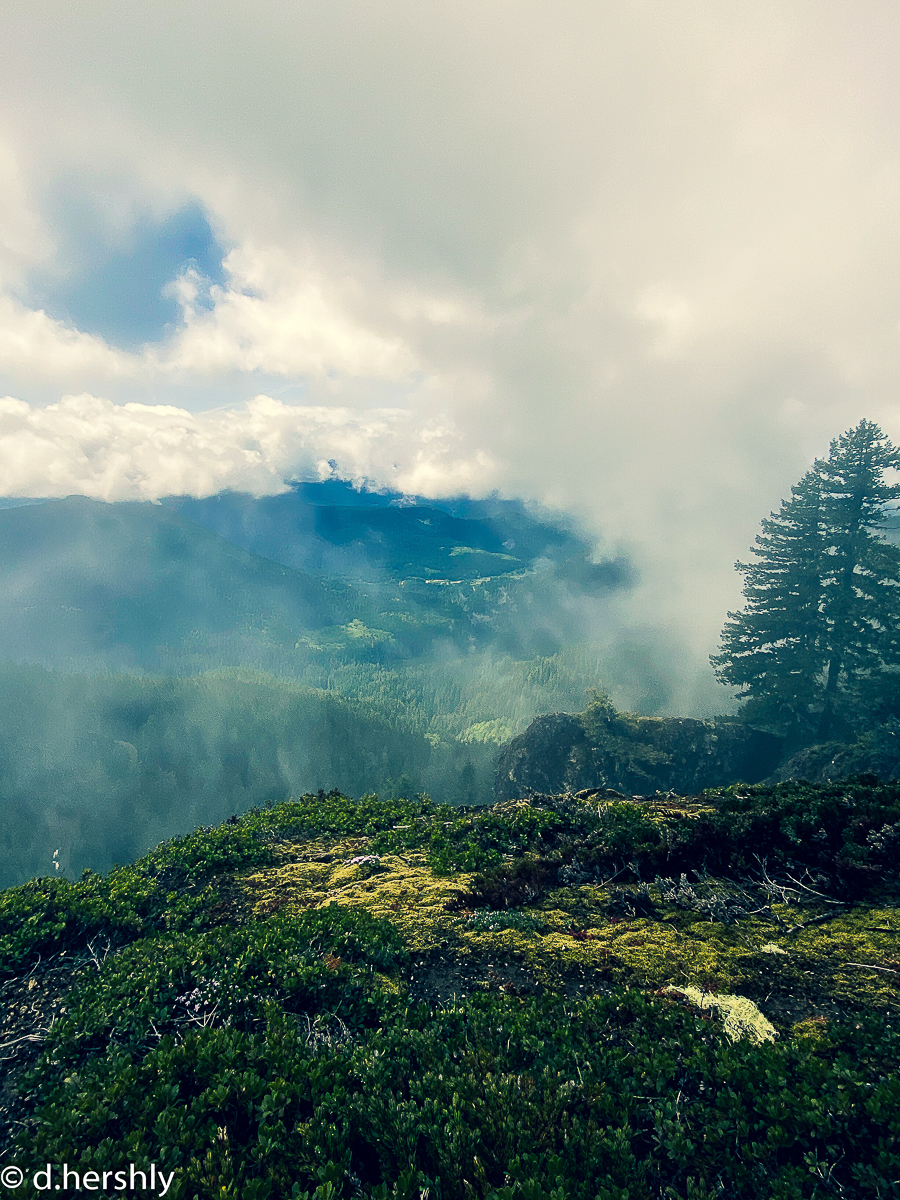
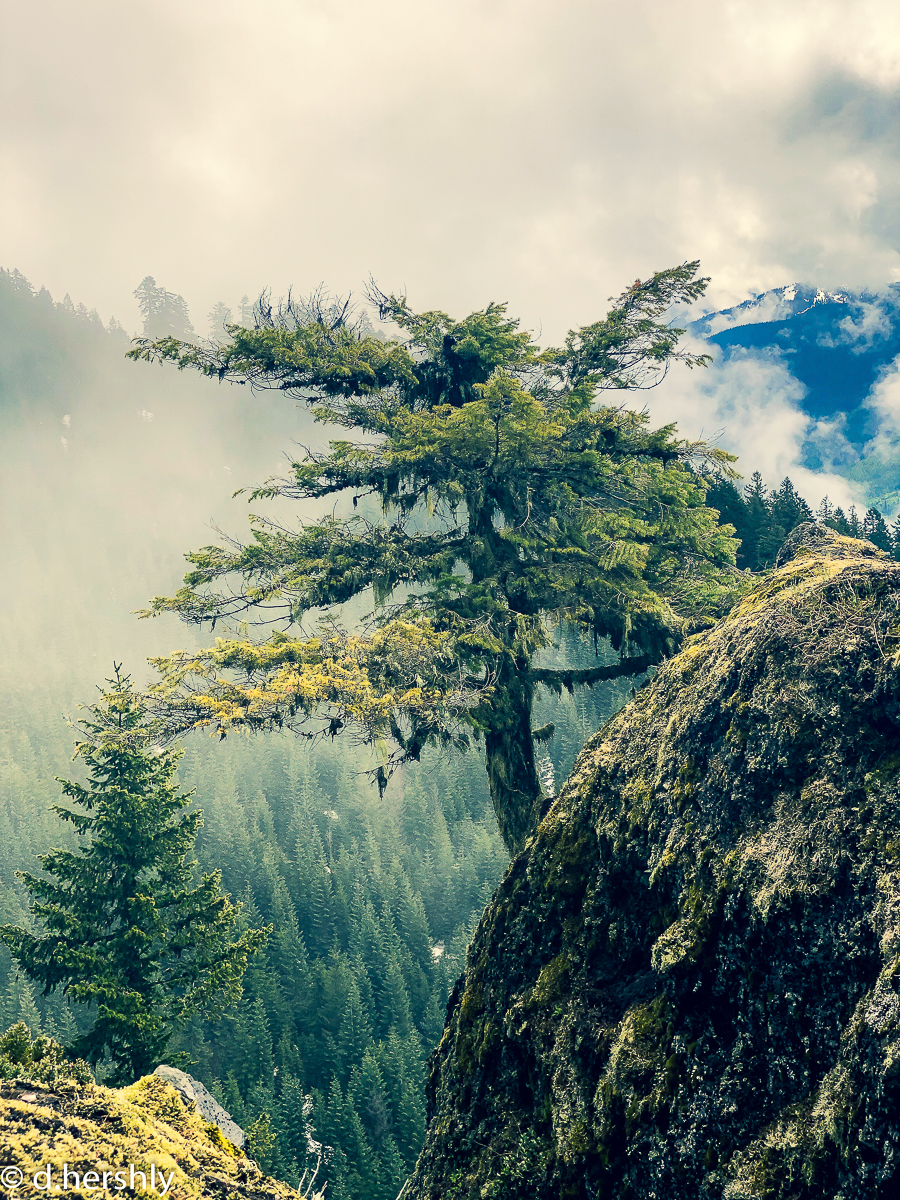
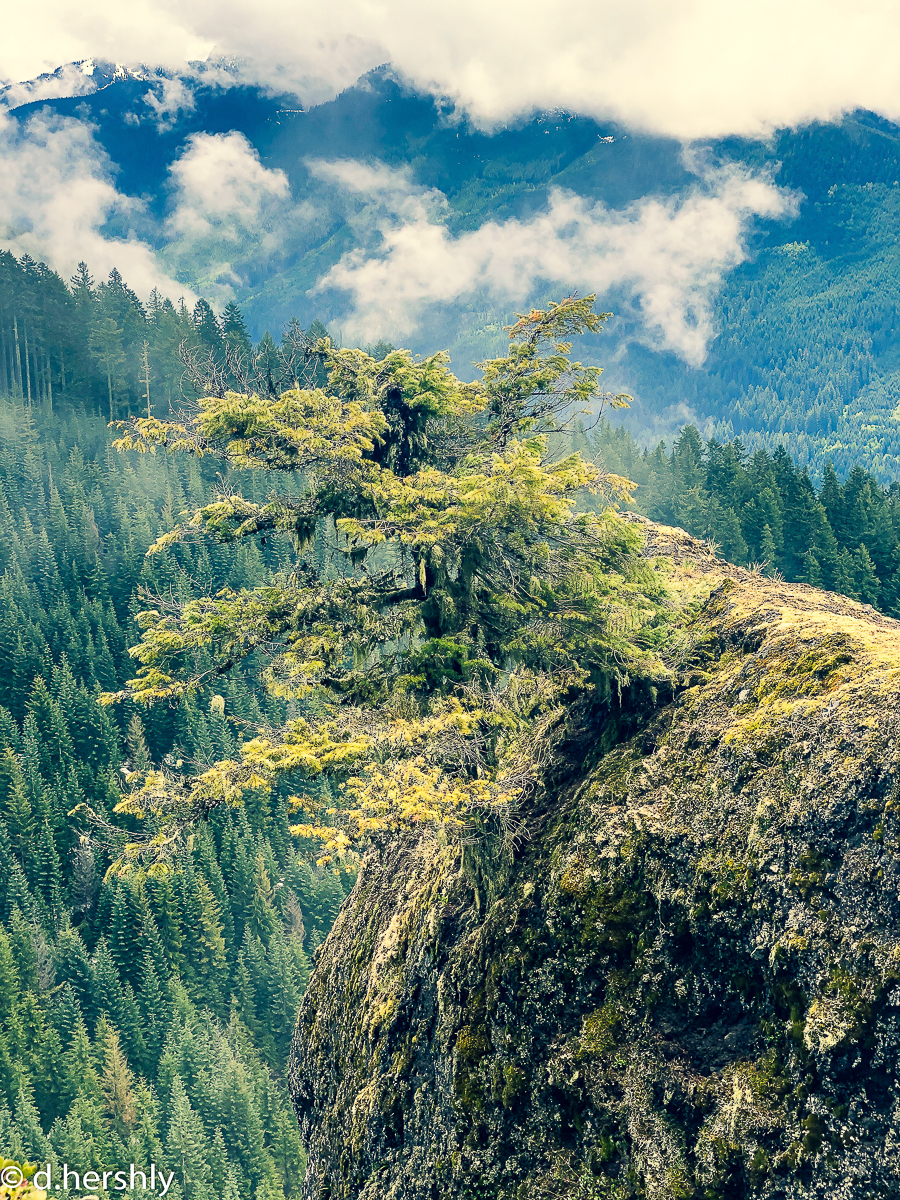
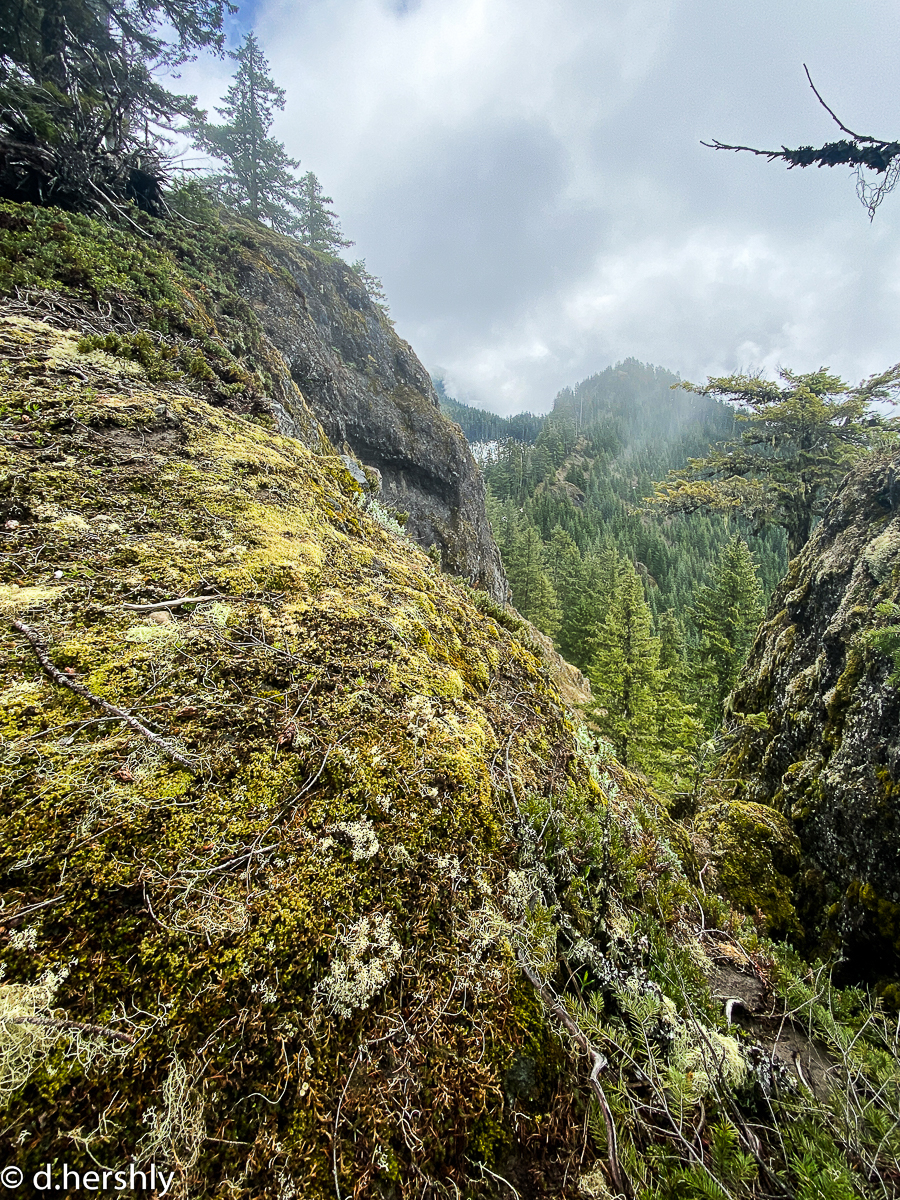
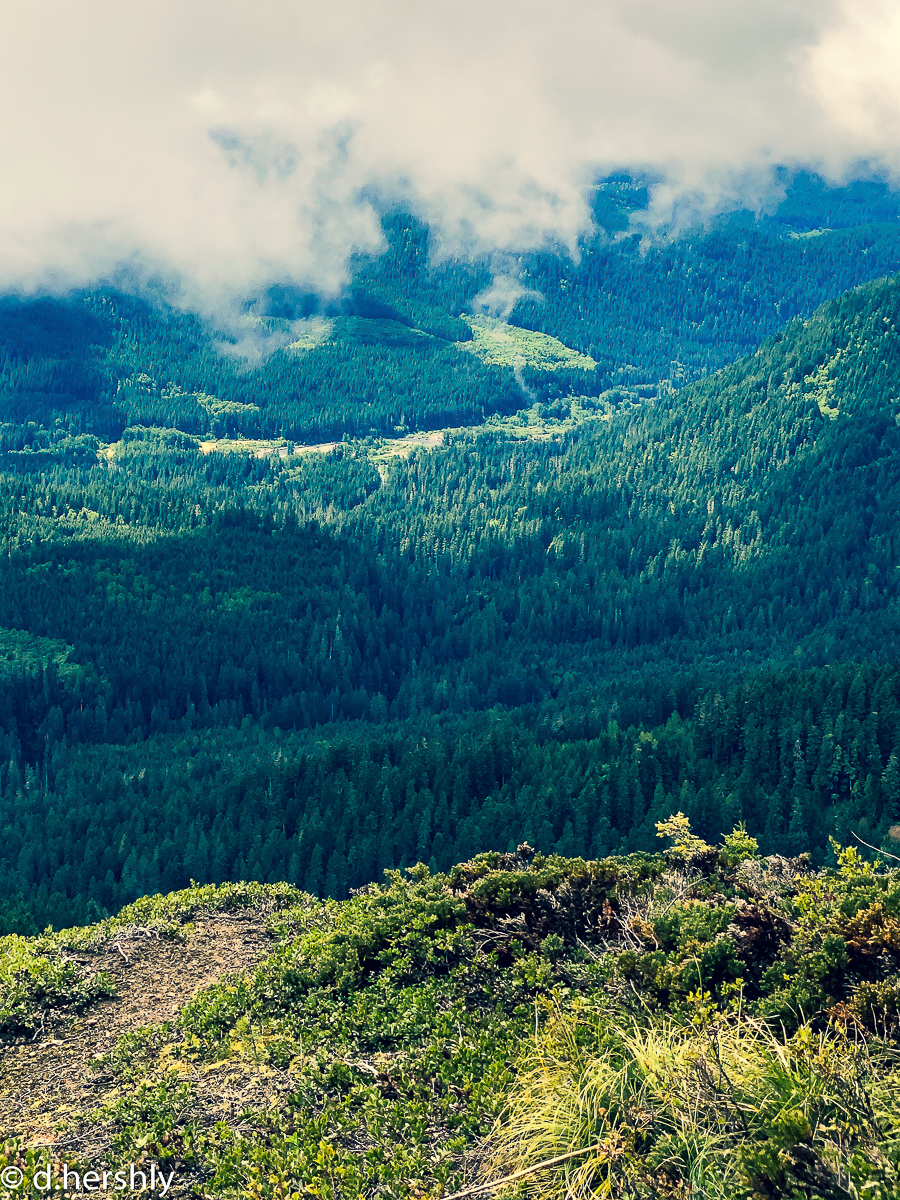
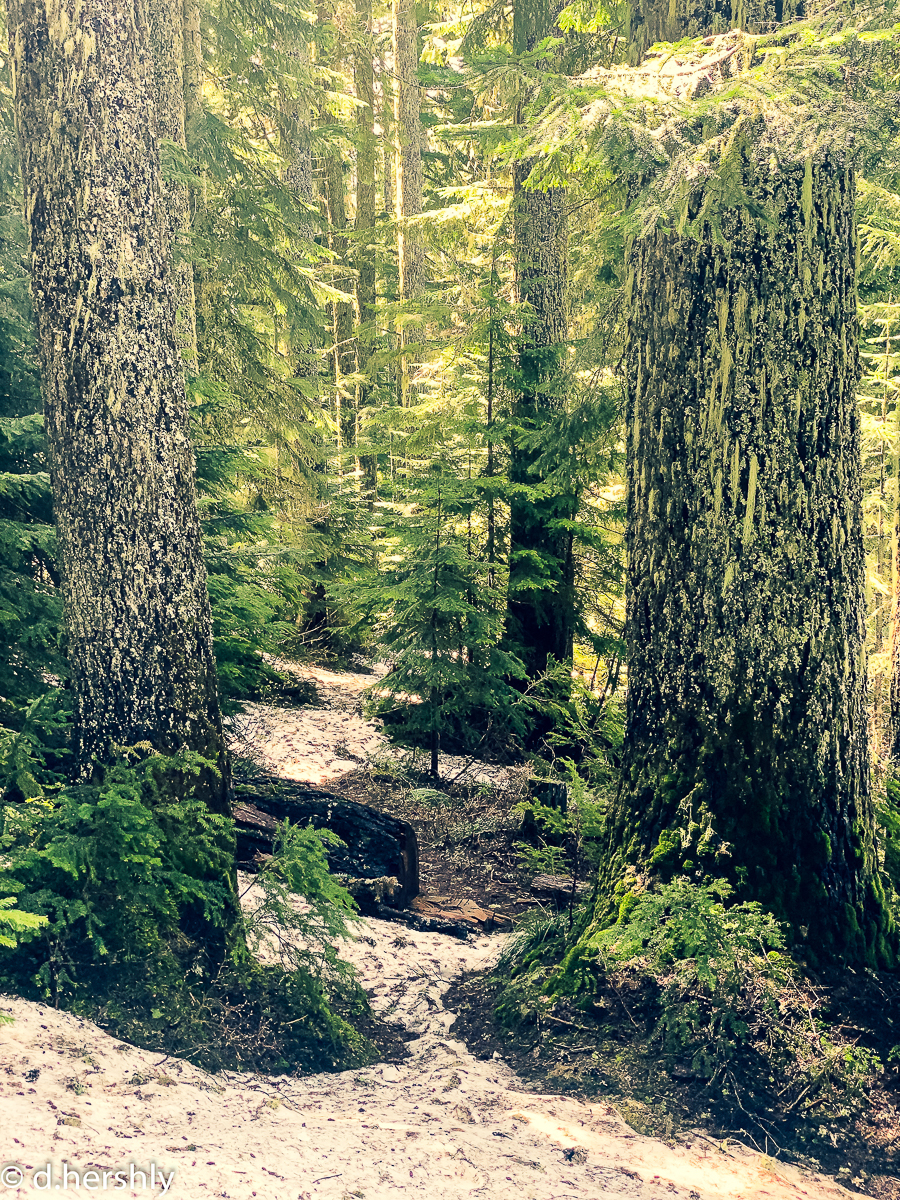
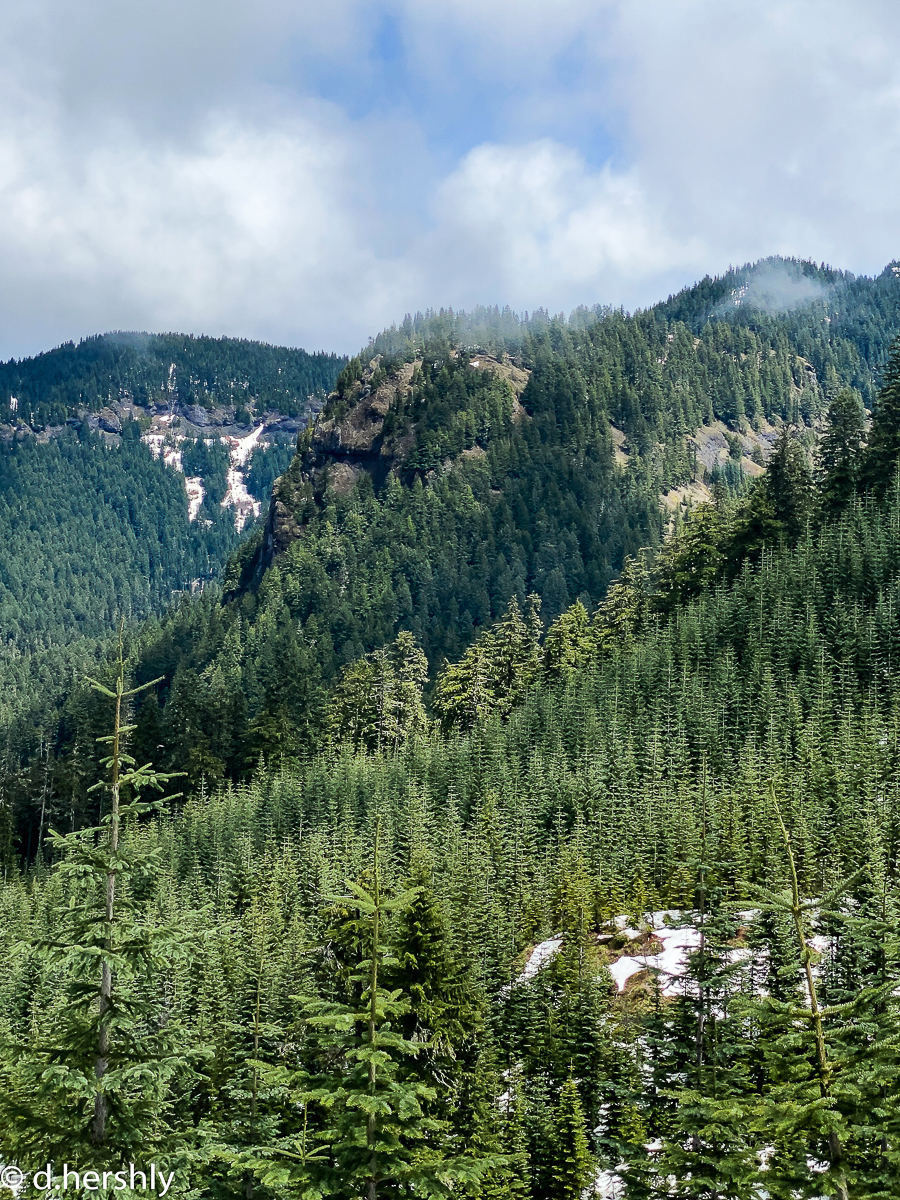
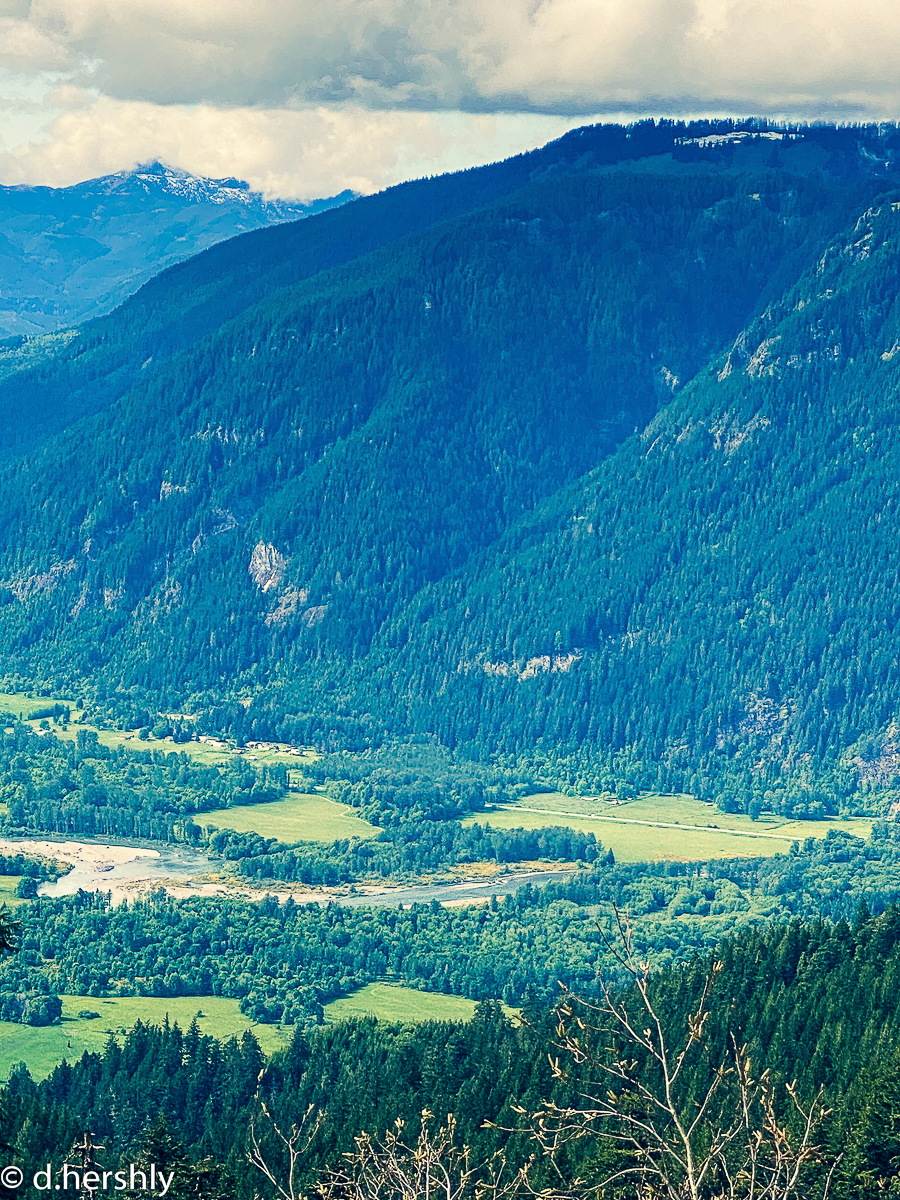
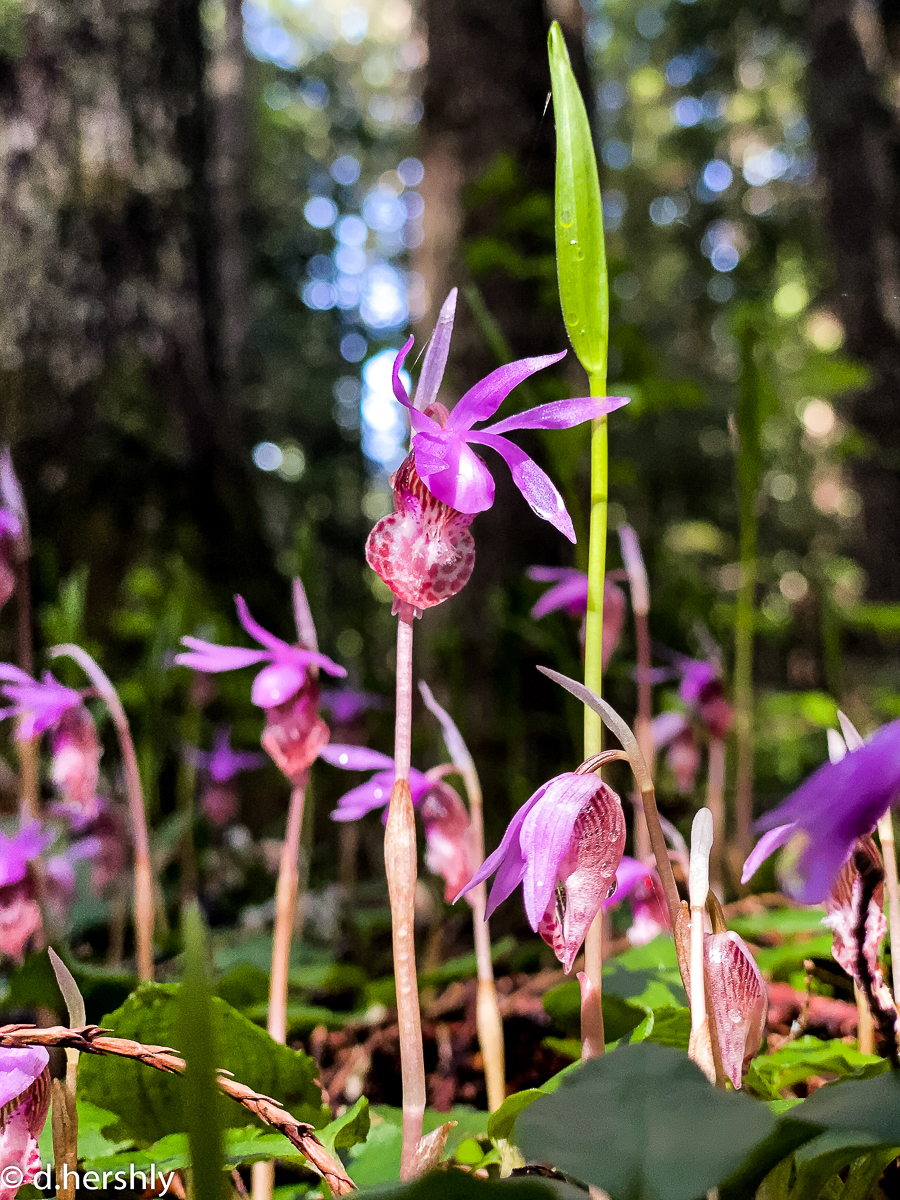
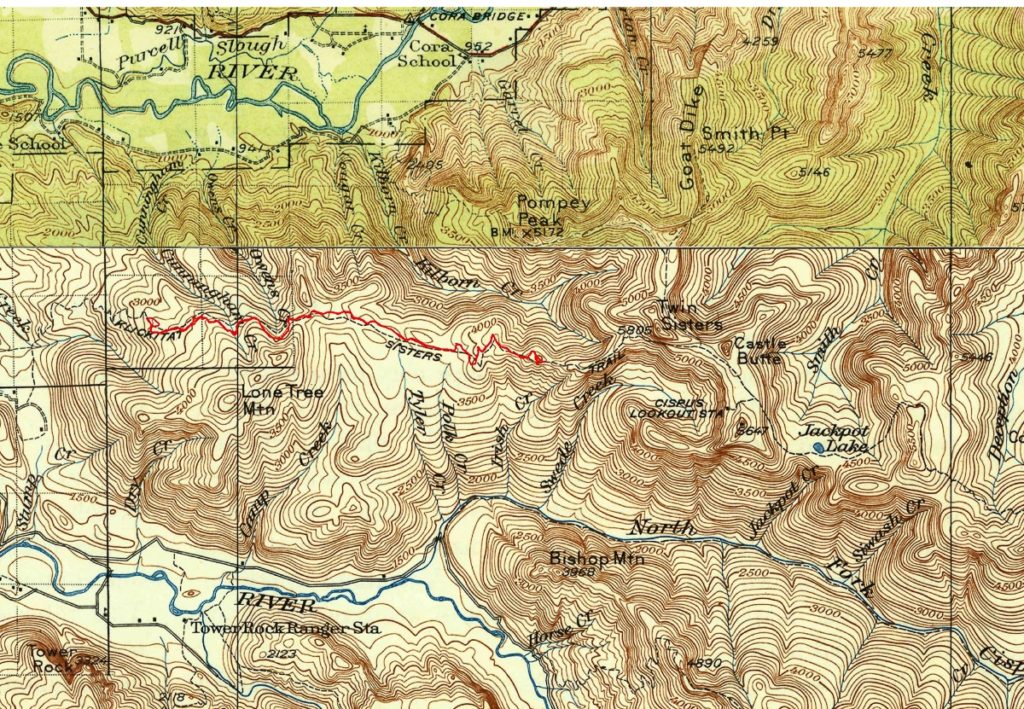
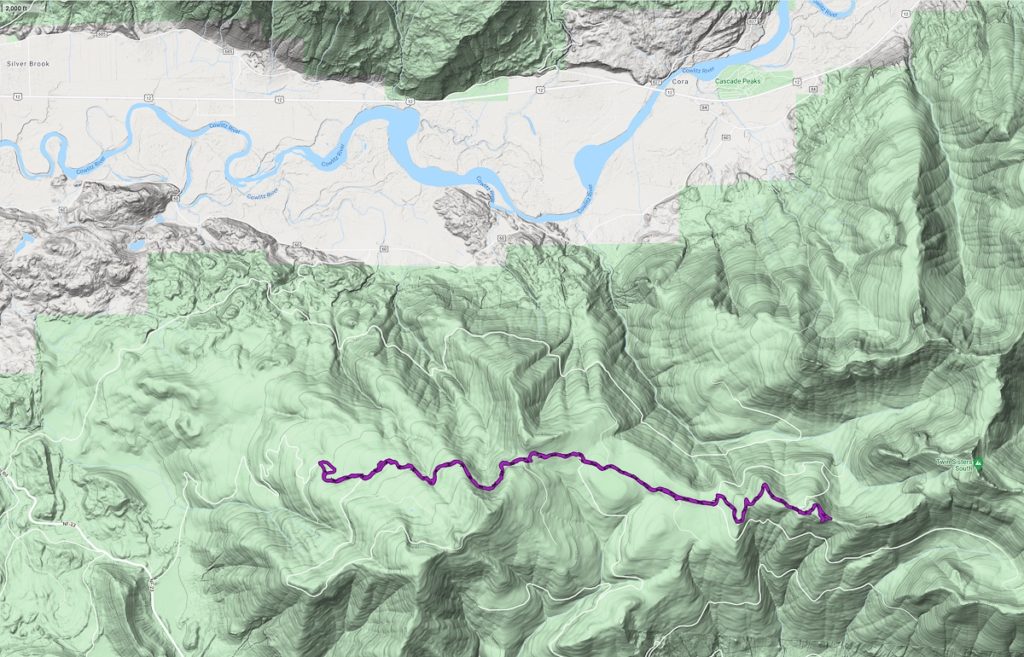
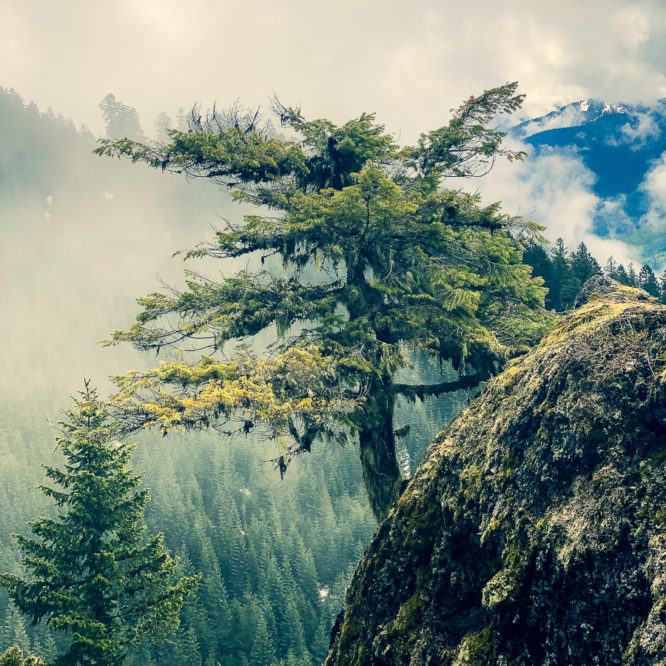
Leave a Reply